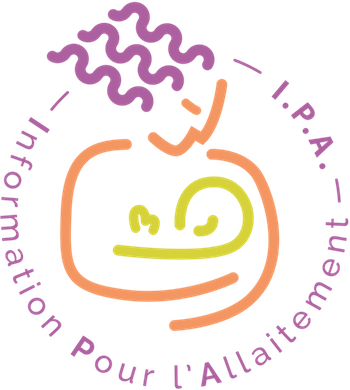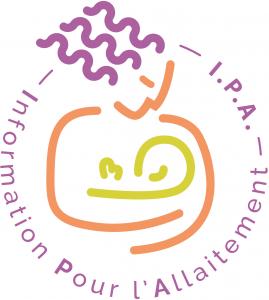Catégories
 > Pathologie > Pathologie du frein lingual > Pathologie > Pathologie du frein lingual
Pathologie du frein lingual |
Documents disponibles dans cette catégorie (22)
 Ajouter le résultat dans votre panier Faire une suggestion Affiner la recherche
Ajouter le résultat dans votre panier Faire une suggestion Affiner la rechercheArticle : texte imprimé
Crystal Unger, Auteur ; Ellen M Chetwynd, Auteur ; Rebecca Costello, Auteur |Background Researchers and practitioners continue to debate the most appropriate assessment, diagnostic, and treatment practices for ankyloglossia (tongue-tie). Health care workers struggle to provide evidence-based care in the absence of consi[...]Article : texte imprimé
Article : texte imprimé
Ryan D. Walker, Auteur ; Susan Messing, Auteur ; Casey Rosen-Carole, Auteur |Objective: The purpose of this study was to investigate the normal lingual frenulum anatomy in newborns and to evaluate tip–frenulum distance as an objective diagnostic tool for identifying newborns at risk for anterior and posterior tongue tie [...]Article : texte imprimé
Dong Hyun Kim, Auteur ; Alexander Dickie, Auteur ; Andy C.H. Shih, Auteur |Ankyloglossia is a failure of the tongue to release from the oral floor with reported consequences that include breastfeeding difficulties and speech impediments. Frenotomy is a commonly performed procedure for the treatment of ankyloglossia. La[...]Article : texte imprimé
Article : texte imprimé
Alona Bin-Nun, Auteur ; Yair M. Kasirer, Auteur ; Françis B. Mimouni, Auteur |Background: Tongue tie or ankyloglossia articles are recorded in the Medline since 1949. Objective: To study trends in yearly number of tongue tie or ankyloglossia publications. Methods: Medline search engine was used to determine the year[...]Article : texte imprimé
Lacey Nelson, Auteur ; Navin Prasad, Auteur ; Michelle M. Lally, Auteur |Purpose: The protocol for postoperative follow-up time after lingual frenotomy in breastfeeding infants with ankyloglossia was changed from 2 weeks to 1 week at our institution. This study examined the impact of this change in practice on frenot[...]texte imprimé
This book is a practical guide for medical practitioners as they navigate through breastfeeding problems that occur in day-to-day practice. If mothers have a breastfeeding complication they are often directed to their GP. In complex situation[...]Article : texte imprimé
By performing an in-depth analysis of one high profile example, this article aims to help breastfeeding support professionals understand the methodological flaws that characterize recent studies claiming to show the efficacy of frenotomy for the[...]Article : texte imprimé
Objective: The prevalence of a lingual frenulum in newborn infants is reportedly 0.3–12%. The purpose of this study was to describe the prevalence of a lingual frenulum based on the Coryllos classification in nonselected newborn infants after de[...]Article : texte imprimé
Currently, many clinicians who help with breastfeeding problems are diagnosing “posterior” tongue-tie in infants and performing or referring for frenotomy. In this “Speaking Out” article, I argue that the diagnosis of “posterior” tongue-tie has [...]Article : texte imprimé
Bobak A. Ghaheri, Auteur ; Melissa Cole, Auteur ; Jess C. Mace, Auteur |Background: Lingual frenotomy improves patient-reported outcome measures, including infant reflux and maternal nipple pain, and prolongs the nursing relationship; however, many mother–infant dyads continue to experience breastfeeding difficulty[...]Bulletin : texte imprimé
Journal of Human Lactation, Vol. 34, n°3 - Août 2018 - Special Issue: Social Justice and Lactation
2018Article : texte imprimé
Lois Wattis, Auteur ; Renee Kam, Auteur ; Pamela Douglas, Auteur |One mum is patiently wrestling with her about 1-month old baby trying to latch him to breastfeed, while the others watch sympathetically, offering support and advice. ‘He always fusses like this. Sometimes it takes 5 minutes to get him on and by[...]Article : texte imprimé
Arieh Riskin, Auteur ; Michal Mansovsky, Auteur ; Tzviya Coler-Botzer, Auteur |Objective: This study explored clinical implications of tongue-tie (TT) on breastfeeding from the mothers' perspective and evaluated the assistance provided. Materials and Methods: This was a single-center observational study using a structur[...]Article : texte imprimé
David A. Todd, Auteur ; Monica J. Hogan, Auteur |Background: In 2011, the Centenary Hospital Neonatal Department guidelines were modified and recommended delaying the division of infant tongue-tie (TT) until after 7 days of life. This paper looks at the effect of these guidelines in practice b[...]Article : texte imprimé
Russell McGoldrick, Auteur ; Donna Solari, Auteur ; Monica Hogan, Auteur |Background: Over the last decade, a number of studies have demonstrated that early division of tongue-tie (TT) is associated with significant feeding benefits to both mother and baby. Notwithstanding, it remains a controversial procedure. We exa[...]texte imprimé
"Tongue-tie: Morphogenesis, Impact, Assessment and Treatment busts the myths associated with tongue-tie that prevent the re-establishment of routine assessment and treatment of the condition in the early postpartum period. Dr. Hazelbaker provide[...]Article : texte imprimé
Ankyloglossia or tongue-tie is the presence of sublingual frenulum, which causes a change in appearance or function of the tongue. The frenulum is shortened, inelastic, thickened, or positioned toward the tie of the tongue or close to the gingiv[...]Article : texte imprimé
Interest in tongue-tie as a source of nipple pain continues clinically and in manuscripts submitted to the journal. It has completely eclipsed reports of yeast as a cause of nipple pain. The report of the problems recorded to occur as a result o[...]























